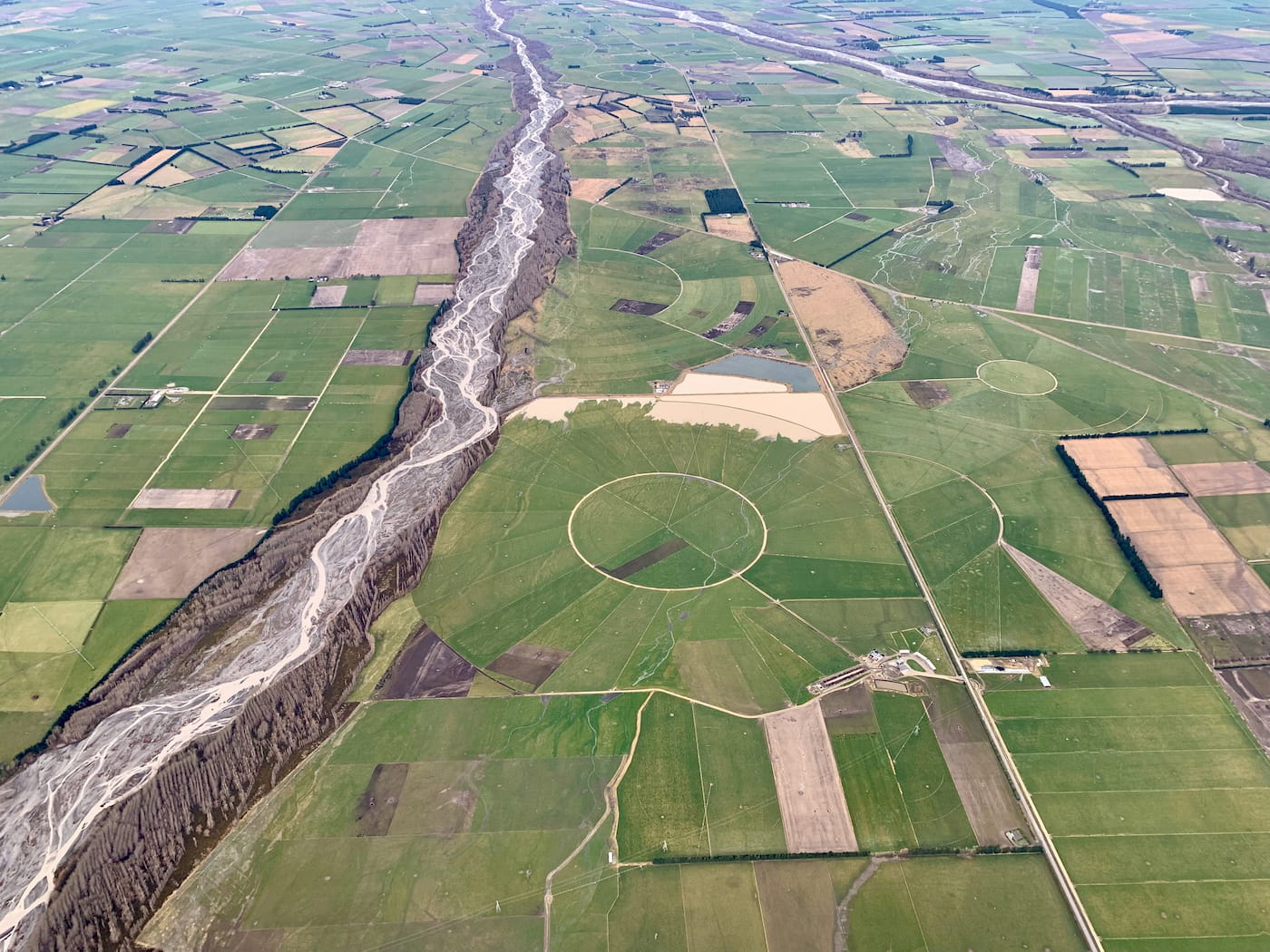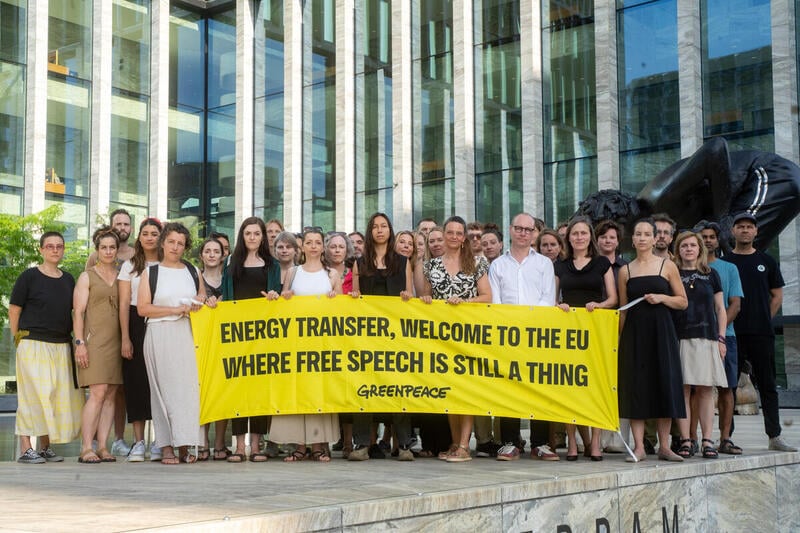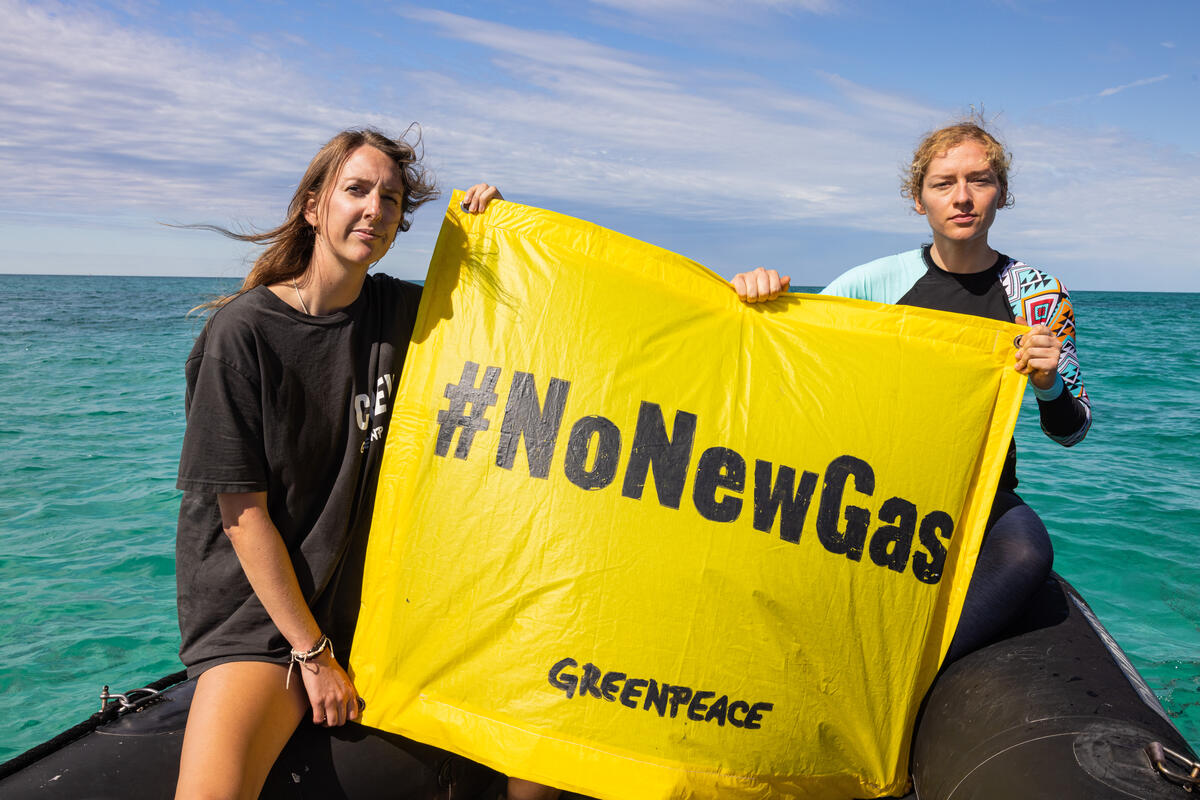Our climate is breaking down, and that’s putting life as we know it in peril. Rising seas and extreme weather events are putting tens of millions of people around the world at risk, costing lives and livelihoods. Younger generations are being robbed of their future on a healthy, liveable planet.
We are at a crossroads where the wrong choice means a hellish future, but if Governments and industry act with urgency now to keep temperature rise below catastrophic levels, we have a chance to re-stabilise our delicate climate.
It will take a global effort, and every country, every government and every industry will have to do its bit to cut emissions of climate pollution.
Fossil fuels like oil, coal and gas have to end. Deforestation has to stop. Our oceans have to be protected, and food production has to be transformed. Globally, industrial agriculture is one of the biggest drivers of climate change and one of the areas we can most fruitfully change. Super-heating climate killers like methane and nitrous oxide come from chemical fertilisers like synthetic nitrogen that are dumped on the land every year in vast volumes making it possible for farms to carry too many cows on the land.
Here in Aotearoa, this is a huge issue because over 50% of our climate pollution comes from industrial agriculture, and half of that is from the dairy industry alone, largely thanks to its addiction to synthetic nitrogen fertiliser. Intensive dairy farming is only possible due to massive quantities of synthetic nitrogen fertiliser.
Greenpeace is calling for a ban on synthetic nitrogen fertiliser. It sounds radical, and it is, but it’s also possible, and it would be a win-win for people and planet.
In the Indian state of Sikkim, all 66,000 of its farms are free of agrichemicals and synthetic nitrogen fertiliser because the Government banned them and used policies, public investment and a transition plan to make it happen.
But it makes the vested interests of industrial agri-business very nervous because they make a lot of money from it. And whenever it’s talked about, someone pipes up with, “but what about Sri Lanka!!”.
So what about Sri Lanka?
What happened when Sri Lanka banned synthetic nitrogen fertiliser?
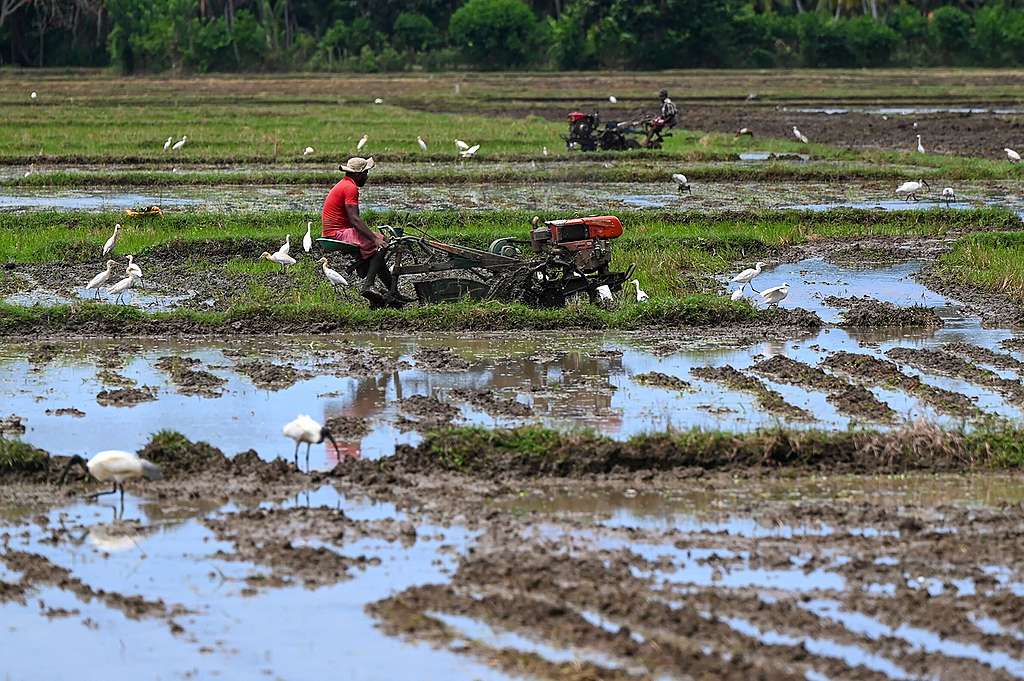
Photo by ISHARA S. KODIKARA/AFP via Getty Images
Sri Lanka is experiencing a severe economic and humanitarian crisis with high inflation, rising commodity prices, power shortages and a lack of fuel. It is the worst economic crisis since the country’s independence in 1948.
The immediate cause of Sri Lanka’s crisis is straightforward: Basically, the country ran out of foreign reserves – the currencies its government and citizens need to pay for imports.
The drivers of this crisis are less straightforward. There are historical drivers, including centuries of colonisation and a 26-year-long civil war, as well as more recent drivers including the pandemic and the Russian war on Ukraine. And there are many other factors in more recent times. Many experts largely blame the recent-President Rajapaksa’s poor economic mismanagement for the current ‘balance of payments crisis’. Climate impacts have also contributed.
One of the key things that happened in Sri Lanka recently is that the Government implemented a ban on synthetic nitrogen fertiliser virtually overnight.
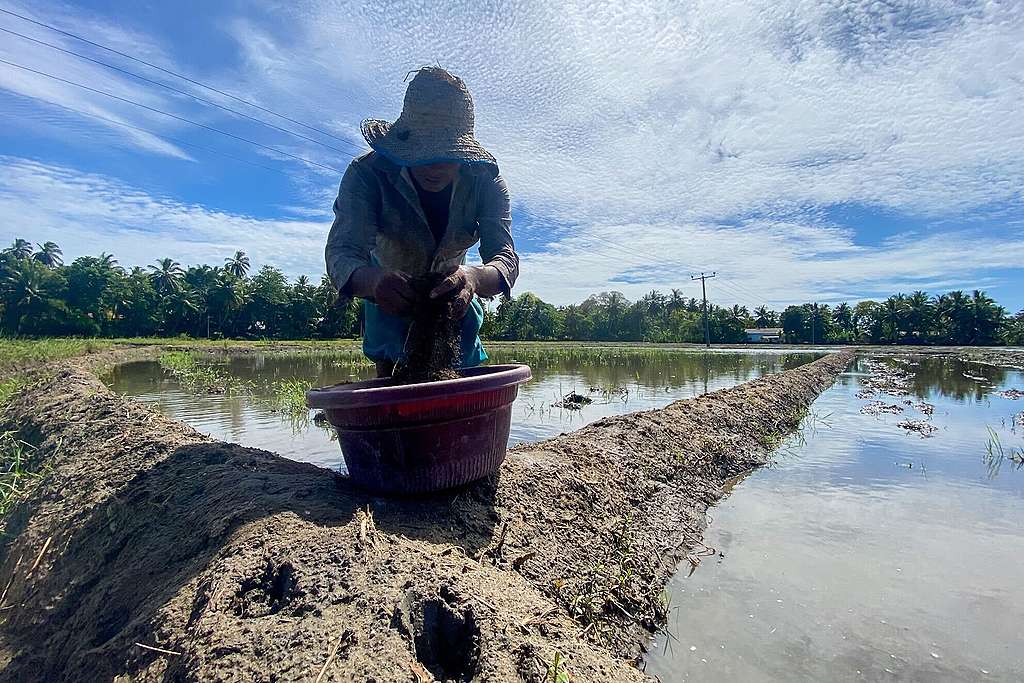
Photo by ISHARA S. KODIKARA/AFP via Getty Images
The botched Sri Lankan fertiliser ban
In May 2021, after Sri Lanka’s foreign currency shortages had become a serious problem and the country was unable to pay for essential imports, the Government introduced a swift and sudden ban on the import of all synthetic fertilisers and pesticides. They hoped this would save them up to $400 million USD on imports annually. This was marketed as a policy to promote organic farming, but really it was about cutting demand for foreign currency.
Almost overnight, the country’s two million farmers were forced to go organic. On top of that, power cuts, lasting upwards of eight hours, meant that water pumps that send water to higher areas often stopped working, cutting off the water supply for irrigation. The mills, which turn the paddy into rice, also rely on power, and some of the rice crop went bad as they couldn’t be milled in time. Rampant fuel shortages mean that farmers can’t run their tractors or get their products to markets, meaning the vegetables are often left rotting on the farm. At the time of the abrupt ban in 2021, most farmers did not have the knowledge and skills to successfully implement organic farming practices, and in protest, many refused to plant altogether last year.
All these issues compounded, leading to reductions in crop yields and poor food security. Sri Lanka then had to buy more of its food stocks from abroad, making its foreign currency shortage even worse. The fertiliser ban was revoked in November 2021, having only been in force for six months. Agricultural experts argue that organic farming should not be blamed for the problems that happened after the policy to ban fertiliser. It was, rather, the speed at which it was implemented and the lack of support to transition to organic farming that was the issue.
Prior to the fertiliser ban, successive governments had encouraged an overdependence on chemical fertilisers through major subsidies. Depending on the commodity, the government had previously subsidised anywhere from 48 to 88 percent of the market price of a 50-kg bag of fertiliser. For smallholder rice production, the government fully subsidised fertiliser, which according to the USDA, inadvertently provided incentives for small rice farmers to over-fertilise their fields. Most of the vegetable and fruit crops cultivated on the island are now hybrid varieties dependent on chemical fertilisers for higher yields. In 2019, the government was subsidising fertiliser to the tune of $253 million USD.
Additionally, British colonists changed the whole structure of Sri Lanka’s agricultural sector for the economic benefit of Britain. Sri Lanka was first colonised by the Portuguese, then the Dutch, and then the British. Some of the major economic and political problems facing Sri Lanka today can be attributed to colonisation and to the plantation economy in particular. When the British took control of Sri Lanka, peasant agriculture, with paddy as the main crop, was systematically destroyed to make way for plantation-based commercial agriculture, which was monopolised by the British.
Cultivation of coffee, tea, rubber, and coconut emerged as principal agricultural export crops, and the British Crown encouraged plantation agriculture by various means including selling land cheaply to cultivators who would plant export crops.Consequently, land for local food production was taken out to make way for these export plantation crops. According to some Sri Lankan commentators, Sri Lankan peasant agriculture is yet to recover from historical neglect as the island nation continues to be dependent on food imports to fill vital gaps in supply. By the time of independence, Britain had taken away Sri Lanka’s self-reliance as its economy had grown dependent on exports of primary commodities and imports of essential food items. The country had to rely heavily on borrowing to counteract its growing trade imbalance, build public infrastructure, and subsidise essential commodities for its citizens.
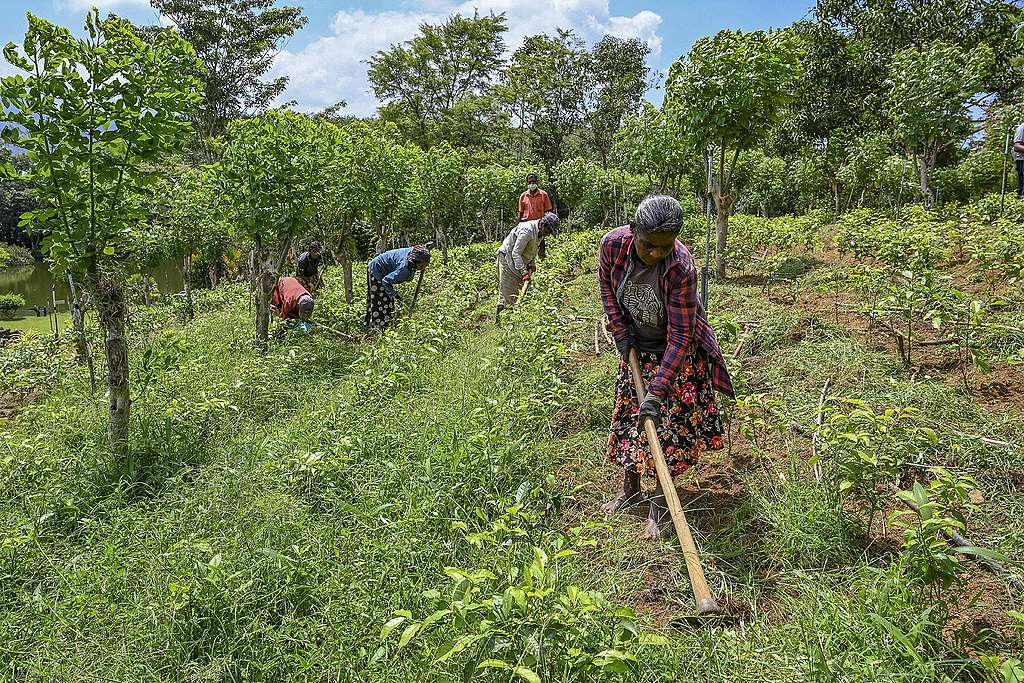
Photo by ISHARA S. KODIKARA/AFP via Getty Images
A missed opportunity
Despite the fertiliser subsidies, Sri Lanka had been taking gradual steps to move towards organic agriculture for many years. The intention to go organic dates back to 2015 when the Sri Lankan President at the time, Maithripala Sirisena, announced his plans for a ‘toxin-free nation’ that put sustainable and people-centred practices over corporate profit. Even prior to that, since 1980 Sri Lanka had been implementing a series of policies designed to limit the access and availability of pesticides responsible for suicide deaths. It banned 36 highly hazardous pesticides to address pesticide poisonings which were accounting for three quarters of all suicide cases. This included bans on 36 highly hazardous pesticides. Additionally, an epidemic of chronic kidney disease among the farming population had led to a ban on glyphosate in 2015.
The transition from conventional, high external input agriculture to organic is normally planned in a phased approach lasting for at least three years, during which farmers are trained and have access to alternative technologies throughout the process. The President had previously indicated that the move to organic agriculture would take place over 10 years. Instead, it was implemented abruptly despite warnings over the impact it would have on agriculture yield. A survey of Sri Lankan farmers by Colombo-based think-tank Verité Research found that the majority of farmers – 64% – were actually in favour of transitioning out of agrichemical-based farming, but 78% thought they needed more than a year to effectively make the shift.
An example of how a fertiliser phase-out can be successfully achieved – Sikkim State, India.
The Government in the state of Sikkim in Northern India began its program to go fully organic in 2003. It started by reducing government subsidies on synthetic inputs by 10% each year, coupled with major public funding, education and investment in transitioning its 66,000 farmers to certified organic. By 2014 it achieved this transition. All farmers are now certified organic, and the import, sale and use of synthetic fertiliser and pesticides are completely prohibited. Since the transition began, there has been a marked increase in water quality, which has, in turn, led to a significant rise in tourism, as the state now successfully markets itself as a health destination.
The key thing to note is that it wasn’t something that happened overnight. And it didn’t happen because Sikkim’s shoppers suddenly decided to buy organic food or because its farmers woke up one day and decided to switch to organic with no support. It happened because the Sikkim Government used policies, public investment and a transition plan to make it happen.
With better management and support, it could have been done in Sri Lanka, and it could be done here in Aotearoa.
We could have farming that works in harmony with nature, producing good, affordable healthy food for everyone who needs it and we could be exporting high-quality, nutritious food as well as being another shining example for the rest of the world.
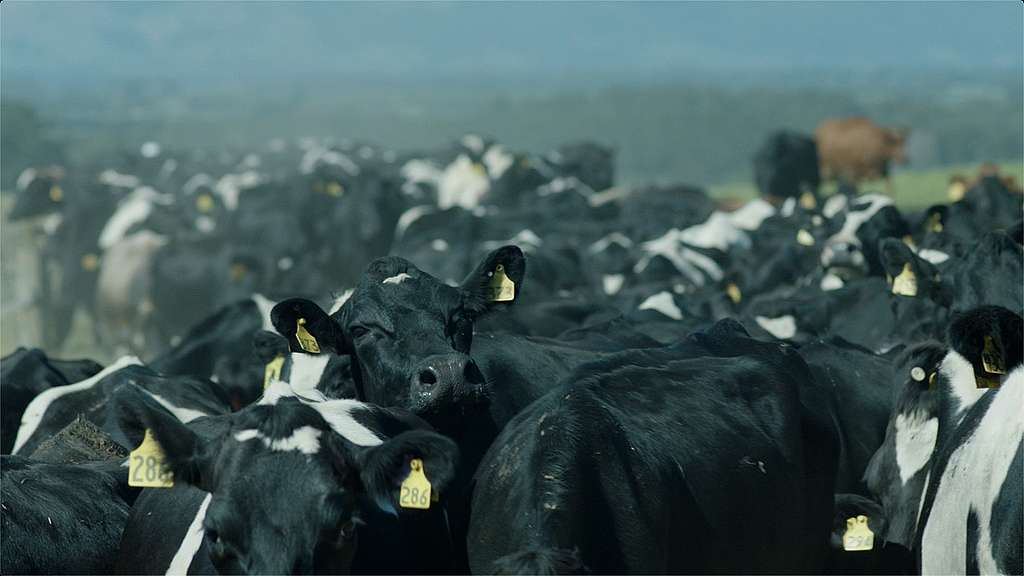
Sign on now to call on the New Zealand Govt to ban chemical nitrogen fertiliser.
Take Action
